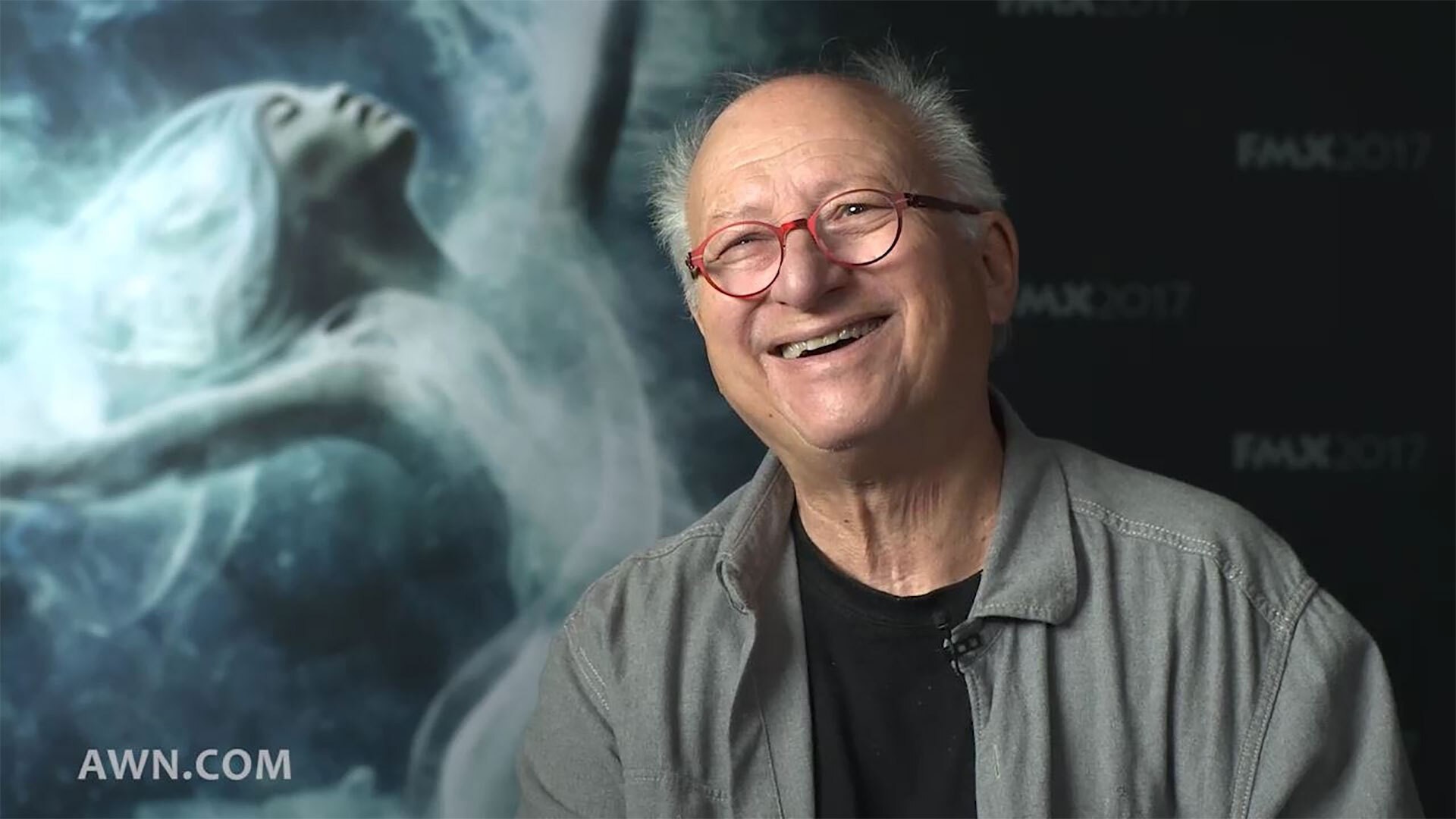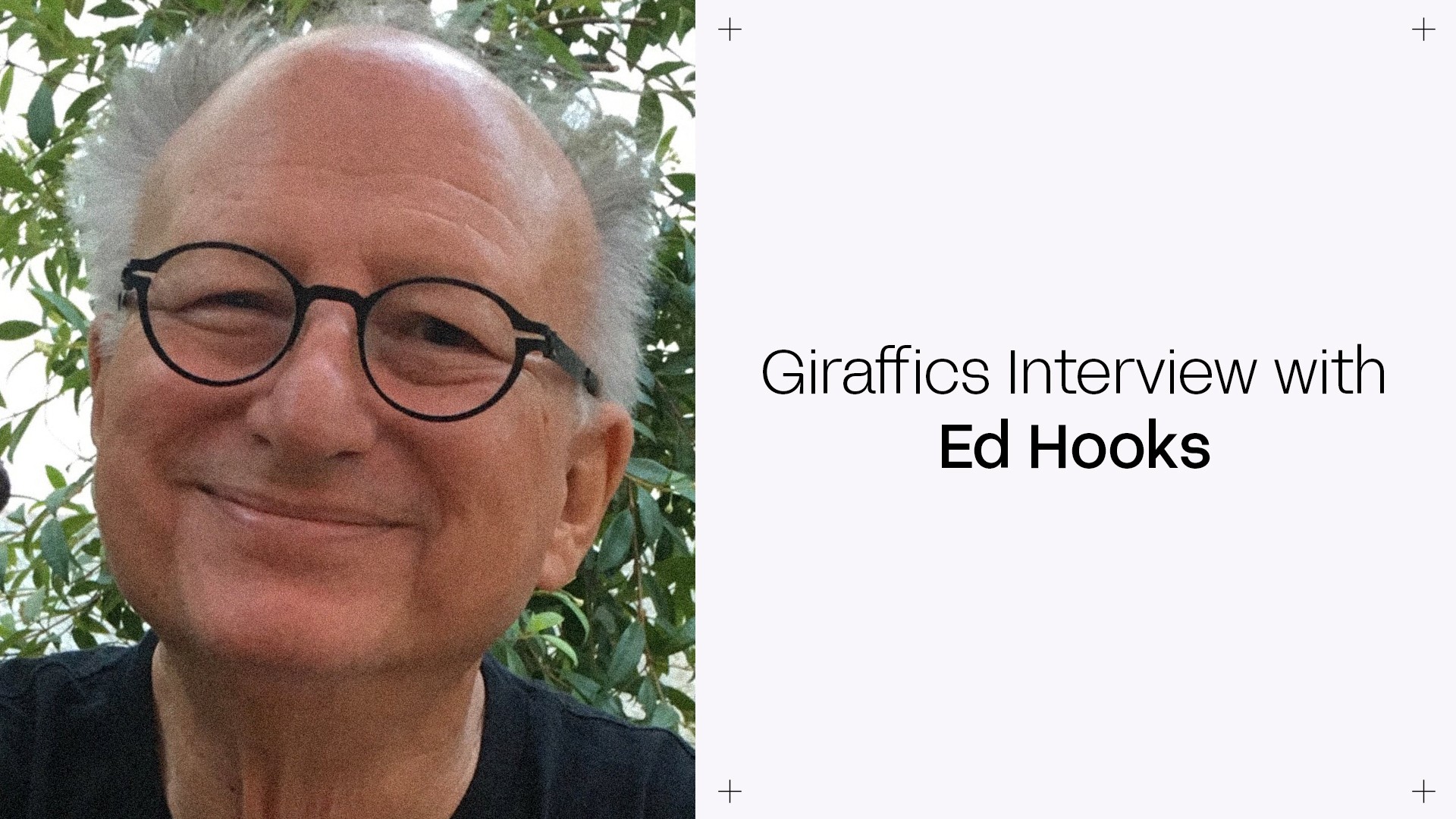
Jun 8, 2023
Unveiling the Art of Animation: Insights from Renowned Expert Ed Hooks
This interview was conducted by Giraffics own Animation Supervisor Aya Quandeel.
1- When did you realize your passion for creating trainings specifically for animators? Was there a defining moment when you felt the urge to begin?
In 1996, I was a successful actor and acting teacher in Los Angeles and San Francisco. One of my acting students — Ken Bielenberg — worked in the daytime as head of VFX at an animation studio called Pacific Data Images (PDI). DreamWorks purchased PDI, and they were in production for a movie entitled Antz, starring Woody Allen. Ken suggested to the animators that maybe I could teach an acting class on-site, at the studio. The moment I walked in there and saw all those animators with their headsets on, I knew I was looking at something exciting. And I immediately wanted to be part of it.
As it turned out, I learned quickly that you do not teach acting to animators the same way you teach it to actors. At PDI, I was given the opportunity to experiment with ways to teach animators.
And I invented Acting for Animators! After Antz came out, I wrote the first edition of my book Acting for Animators. This year, 2023, the revised 5th edition of that book will be published by Routledge in London. And I have taught my masterclass in over 35 countries. It has been a wonderful journey, and I am a very lucky man. I have even taught in Egypt!!

2- Is achieving perfect acting in a movie an impossible feat? Have you ever watched an animated film and felt like they've achieved it?
Let me answer that question by referencing the live theater rather than movies.I will next April be traveling to London with my wife, Cally, to see a stage production of Eugene O’Neil’s classic American play A Long Day’s Journey Into Night. Starring Brian Cox in a lead role as the Father of a tormented theatrical family. I know the play quite well and have seen several other marvelous productions of it over the years. Why would I see the same play again and again? Because I want to see what each actor does with the role. I am sure that Brian Cox’s portrayal will be different from other portrayals I have seen. This is how acting works. There really is no such thing as a “perfect” performance. Each performance is unique to the actor portraying the character.
Yes, there are extraordinary performances in movies. Marlon Brando in Tennessee Williams’s A Streetcar Named Desire comes to mind. I have seen several productions of the play that the film was based on, and Brando is just amazing.
In animated films, I love the acting in The Iron Giant and also in Coraline. But, even as fine as those performances are, I hesitate to call them “perfect”.
3- You said : "acting has almost nothing to do with words, acting has to do with intention", can you explain it further?
When you first had the idea to invite me to sit for this interview, I will bet you were not talking — but you had “intention”. You had an “objective” that was provable. At that moment, you probably did NOT have much “conflict/obstacle”, which is essential for “theatrical reality”, but you would still have been interesting to watch in that non-verbal moment. An animator named Bay Raitt is a friend of mine. He was the lead animator on Gollum’s face in the first Lord of the Rings movie. Bay told me that the animators took a pencil and, next to Gollum’s lines in the script, they wrote in Gollum’s thoughts. Then they animated the thoughts! That worked very well because Gollum was always lying, saying one thing and thinking another. The acting had almost nothing to do with words. Animate the thought!
4- "No conflict, no scene", you said; Does that apply for big obstacles the character have to overcome to achieve his objective, and for the small actions as well? Must every single scene have an obstacle the character has to overcome?
In general, the stronger the conflict/obstacle, the better the scene will be. If I am in conflict about whether or not to go brush my teeth, there would be conflict, but I doubt you or anybody else would be very interested. If I was in conflict about whether or not to get in a rocket ship and fly to the moon, you might be very interested. Everything really depends on the story being told.
Just remember that conflict/obstacle is an essential element of theatrical structure. Actors learn that a theatrical moment should have structure 100% of the time.
“What is my Objective?”, “What is the Action I am playing to achieve that Objective?” and “What is the Conflict/Obstacle?” And, remember, there are only three kinds of Conflict/Obstacle: (1) Conflict with yourself; (2) Conflict with the situation, and (3) Conflict with another character. You can have more than one kind at the same time. The problem arises if you have no conflict at all.

5- How to animate silence, the moments when the character is listening or thinking, for example?
When a character is listening to another character, she is thinking of responses — and then deciding not to interrupt. Listening is “active”.
If a character is sitting in a comfortable chair on the front porch, just thinking about things, that may be interesting for a brief moment, but you would not want to keep a shot like that on screen for long because the audience is waiting for the character to “do” something.
6- Favorite experience from a previous animation festival you attended?
Recently, I was invited to teach my Acting for Animators masterclass at a video-game company named Supercell, in Helsinki, Finland. My instructions were to meet a company representative in the lobby of the building at 9am. When I entered the lobby, a man a little younger than me was waiting. He approached me and gave me a big, warm hug. “I took your class at an animation festival in Sao Paulo, Brazil - twenty years ago.
What I learned in that class has followed and influenced me for my entire career. I have worked for Disney and DreamWorks and other video-game studios. Supercell lets me express my personal values, and I am happy here. In your class, you taught that animators are shamans, that we ’talk to the tribe’.
I have never forgotten that, and I am glad that I can tell you now.” And that warm greeting was initiated by an animation festival in Brazil many, many years ago. I do appreciate this kind of moment!
7- What has changed in animation festivals over the years?
Well, some festivals — fortunately, not all of them — have become very “commercial”. Animation is the most under-used, under-appreciated art form of the 21st century. Festival organizers should be compensated, definitely, but the focus should constantly be on the artists that are attending. The next generation of artists are the most important players on the field, and we should never forget that.
8- What do you think can be added to animation festivals?
There should be more opportunity for attendees to display their own work. Maybe they could get more feedback and advice from established people in the industry.
9- What do you think about "AI", do you think it will enhance acting and animation in general ?
AI cannot create original performances. AI is like a vacuum cleaner that regurgitates. Yes, it can copy what actors have done on film, and it can reconstruct facial expressions to make something that will look like an original performance — but it is a trick. It is not an original performance. I do believe that AI is a technology that is going to change the world as we know it. I am excited by the possibilities — and a little worried about the potential for AI to cause mischief.
10- Last but not least, Could you share a single piece of advice for animators and directors?
Remember what Aristotle said in his Poetics: “Every human action has a purpose.” Every animated moment should have a purpose. Yes, animation involves physical movement, but it does not have to always include a LOT of movement. Intensity is very…still.
To summarize, during our conversation with Ed Hooks, we explored "perfection" in animation. From iconic live-action portrayals by legends like Marlon Brando to captivating animated performances in films like "The Iron Giant" and "Coraline," we delved into the artistry behind these exceptional acts. However, Hooks believes that despite these works' lasting impact on the industry, perfection can hardly exist when there is so much to evolve, improve, and explore in the world of animation and acting.
We also ventured into the realm of technology and its influence on the animation industry. Hooks emphasized the irreplaceable role of human creativity and originality in bringing characters to life while recognizing the potential for AI to enhance the craft.
We explored the intricacies of animating silence and the importance of character thoughts and listening moments. We discovered the power of intention and its purpose in animated scenes where the characters are alive with internal reflections and decisions even in stillness.
Drawing from Ed's experiences attending international animation festivals, we examined the evolving landscape of these events and the need for more opportunities for attendees to showcase their work.
Through his thoughts and insights, we gained a deeper understanding of the boundaries and possibilities that lie ahead in animation.
Your curiosity to learn more from Ed Hooks doesn’t have to end here. You can check out his website or email him for any inquiries at EdHooks@EdHooks.com.
